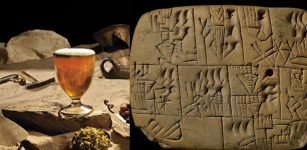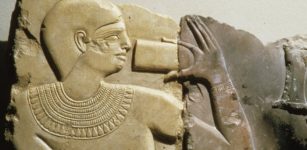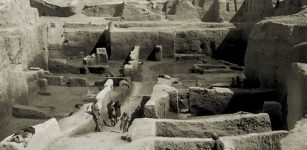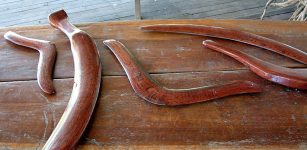Dice Existed Long Before Recorded History And Were Not Always Perfect Cubes
AncientPages.com - Researchers at University of California, Davis have centered their study on how dice were made and changed over the last 2000 years.
The dice accompanied people very long time and during this time they had different shapes and sizes. These small objects were used since before recorded history, and it is uncertain where they originated.
The oldest known dice, which were part of a backgammon-like game set were unearthed at the Burnt City, located in the southeast province of Sistan and Baluchistan, bordering Pakistan and Afghanistan.

These are 14th century medieval dice from the Netherlands recovered during an excavation in the 1990s. Image credit: Jelmer Eerkens, UC Davis
Before 400 CE or in Roman times, all dice highly varied in shape, size, material and configuration of numbers. During the Dark Ages, the dice were very rare.
See also:
Hnefatafl: Ancient Viking Board Game “King’s Table” Popular In Medieval Scandinavia
Ancient Egyptian Toys And Games In Focus
Unique More Than 1,600-Year-Old Board Game With Pieces Recovered From Roman Soldier’s Tomb
In Roman times, many dice were visibly lopsided, unlike today's perfect cubes. And in early medieval times, dice were often "unbalanced" in the arrangement of numbers, where 1 appears opposite 2, 3 opposite 4, and 5 opposite 6. It did not matter what the objects were made of (metal, clay, bone, antler and ivory), or whether they were precisely symmetrical or consistent in size or shape, because, like the weather, rolls were predetermined by gods or other supernatural elements.
Aroun 1450, dice makers and players began to figure out that form of dice largely affected its function, according to Jelmer Eerkens, University of California, Davis, professor of anthropology and the lead author of a recent study on dice.
During the Renaissance-era, “people like Galileo and Blaise Pascal were developing ideas about chance and probability, and we know from written records in some cases they were actually consulting with gamblers," Eerkens said.
"We think users of dice also adopted new ideas about fairness, and chance or probability in games."
Around 1450, the numbering system quickly changed to "sevens" where opposite sides add up to seven (6-1; 5-2; 3-4). Dice also became highly standardized in shape, and also were made larger again.
Dice are not common finds in archaeological sites. They are typically found in garbage, domestic areas, or cemeteries, and frequently are recovered as lone objects in a site. Many are not accurately dated. Eerkens’ team gathered and analyzed a set of 110 carefully dated, cube-shaped dice.
The researchers conclude in their article, "Gamblers may have seen dice throws as no longer determined by fate, but instead as randomizing objects governed by chance."
Their findings were published in the journal Acta Archaeologica.
Original story - here.
AncientPages.com





















